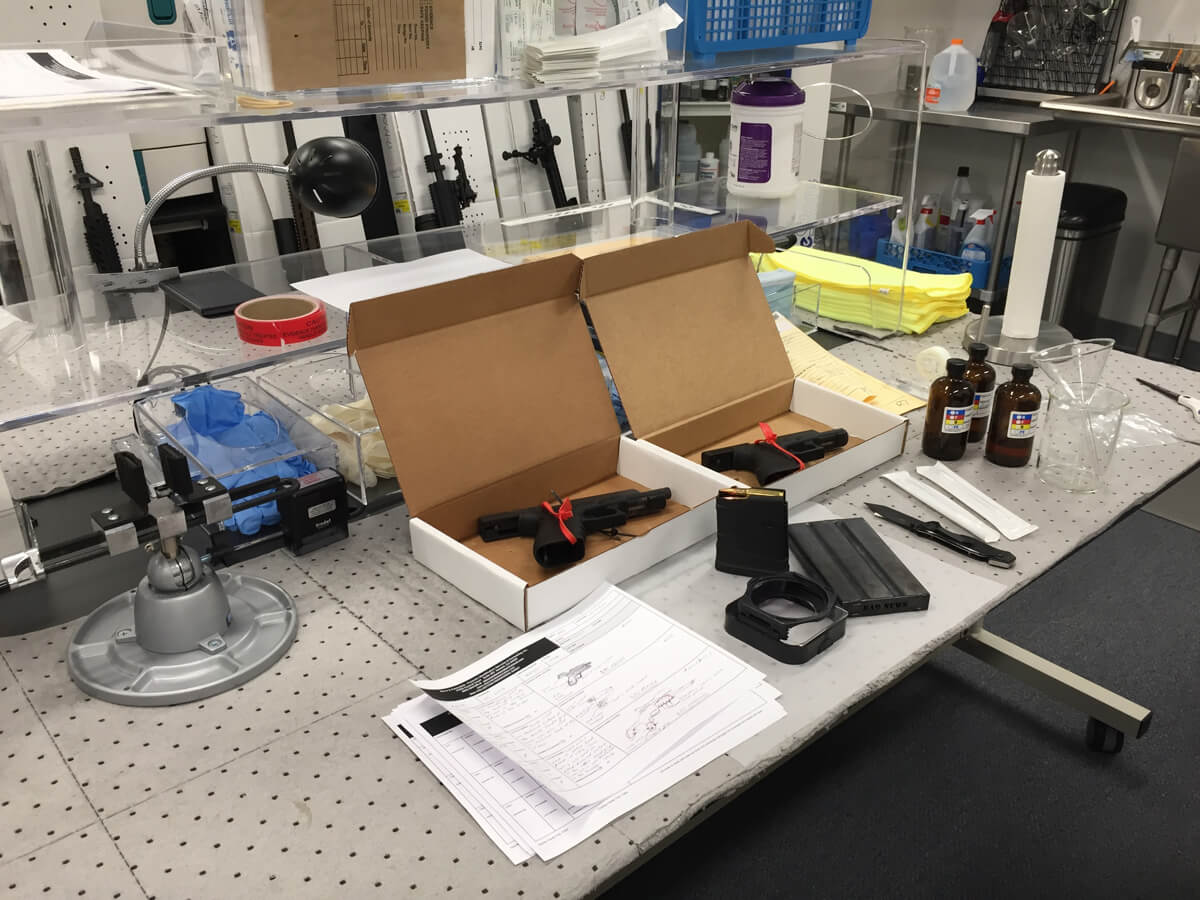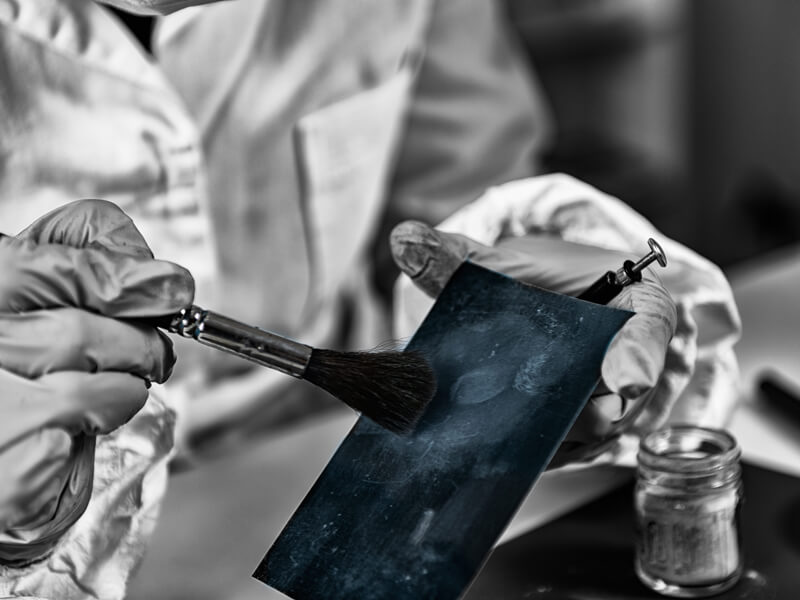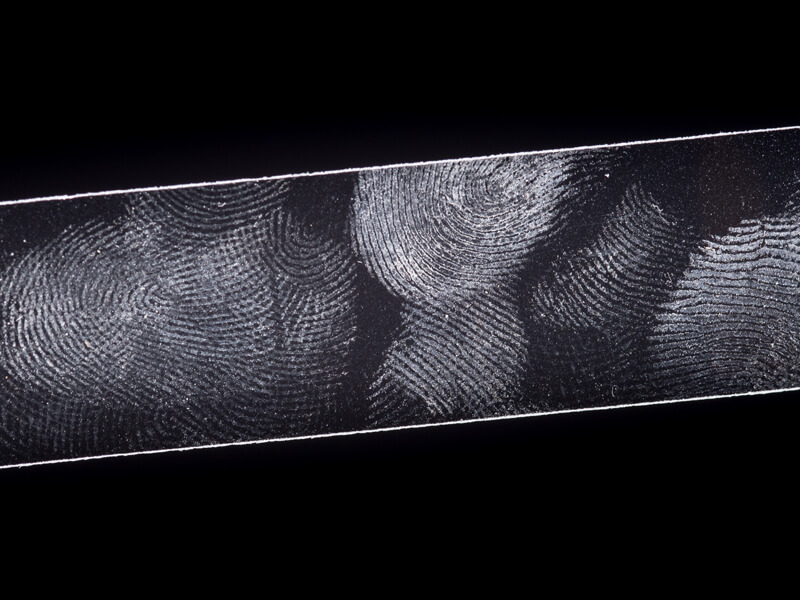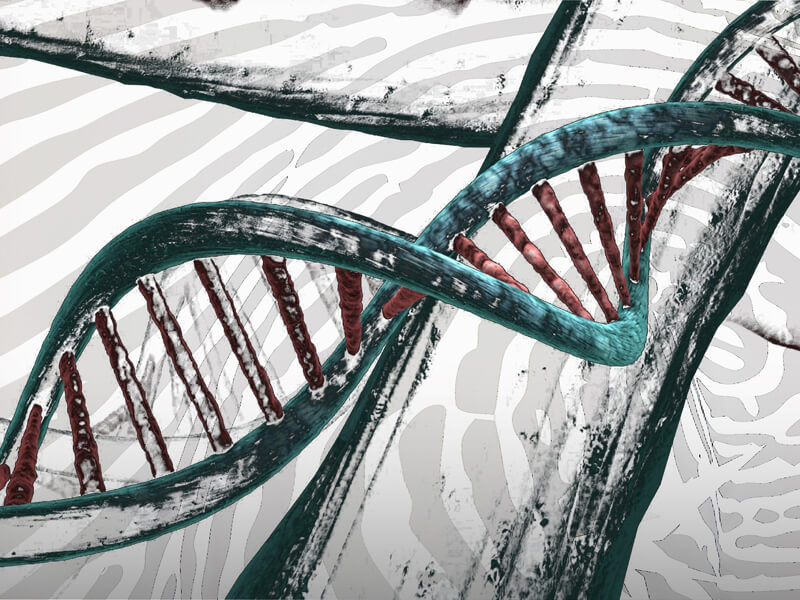
Fingerprint processing is the technology commonly used to recover, document, and preserve hidden or invisible fingerprints for the use in the identification process. Over the past 100 years, scientists have developed various physical and chemical methods for law enforcement and government agencies to recover and document latent fingerprints from various surfaces. The process of fingerprint processing typically involves sequential physical and chemical processes, capturing images of finger and palm marks, evaluating, and extracting unique features from the print image, full documentation and preservation of the recovered prints and eventually comparing those features to the known fingerprints of individuals to determine association or exclusion.

In our laboratory, we use two different fingerprint recovery and processing techniques, physical and chemical methods. In most cases both processing methods are used in combination and sequentially.
Physical recovery techniques involve the use of highly technical forensic photography and lighting methods. It also refers to techniques that uses a variety of powders, which attach and bond to fingerprint residues and make the fingerprints visible. The powder methods are normally used in cases where the objects are fixed or stationary, typically at crime scenes.
Chemical recovery techniques are the most preferred and high-yielding methods, which involve the use of chemical reagents to develop and make fingerprints visible. In these processes, the reagents or fumes from the chemicals react with different constituents of fingerprint residue, such as oils, amino acids, and salts, to make the invisible marks visible. However, in many cases, fingerprints may remain invisible even after chemical processing. In such cases, a variety of forensic light sources, bi-pass and barrier filters, and high-quality capturing devices are used to visualize and document the prints.
Our laboratory is equipped to process the three common types of surfaces for fingerprint processing, which covers almost 90% of commonly used objects, including non-porous, porous and semi-porous objects or surfaces. Please see below chart for the example of surfaces we can process and recover prints from:
| Non-Porous surfaces | These surfaces are not permeable to water, other liquids and air. Examples are glass, many hard and soft plastics, metals, ceramics, painted or unpainted metals, styrofoams, polyethylene, and adhesive tapes. |
| Porous surfaces | These surfaces are composed of materials that absorb water and other liquids. Examples are paper, cardboard, untreated wood and matt-painted surfaces. |
| Semi-Porous surfaces | This is a broad category of surfaces which includes both materials of truly semi-porous nature, such as leather, silk- and satin- painted surfaces, and those with regions of porous nature interspersed with non-porous regions, such as heavily printed paper or cardboard, magazine covers, |


Upon request, we can extract DNA samples from evidence items submitted to us before and after fingerprint processing. There are times that the fingerprint processing does not result in recovery of valuable fingerprints, but there is a high chance that the fingerprint residue contains touch DNA. In such cases, the DNA collections can be extracted, properly documented, packaged, and submitted to our associated DNA laboratory for analysis and identification. The samples are then analyzed in the associated laboratory using DNA extraction, amplification, and analysis methods to identify its source. For civil cases, clients should submit known DNA samples to the laboratory for comparison. We coordinate the entire fingerprint and DNA process to make this procedure as easy as possible for our clients.
DNA collection from objects is an important step in forensic analysis. This process involves collecting and preserving samples of DNA that may be present on an object, such as a weapon, clothing, or any touched items, including paper. The samples are collected using techniques such as swabbing, scraping, or vacuuming. The collection of DNA from objects is a critical step in criminal and civil investigations, as it can provide valuable evidence for linking individuals to crime scenes, objects, or identifying victims. It is important to follow strict protocols to ensure that the DNA samples collected are accurate, reliable, and admissible as evidence in court.